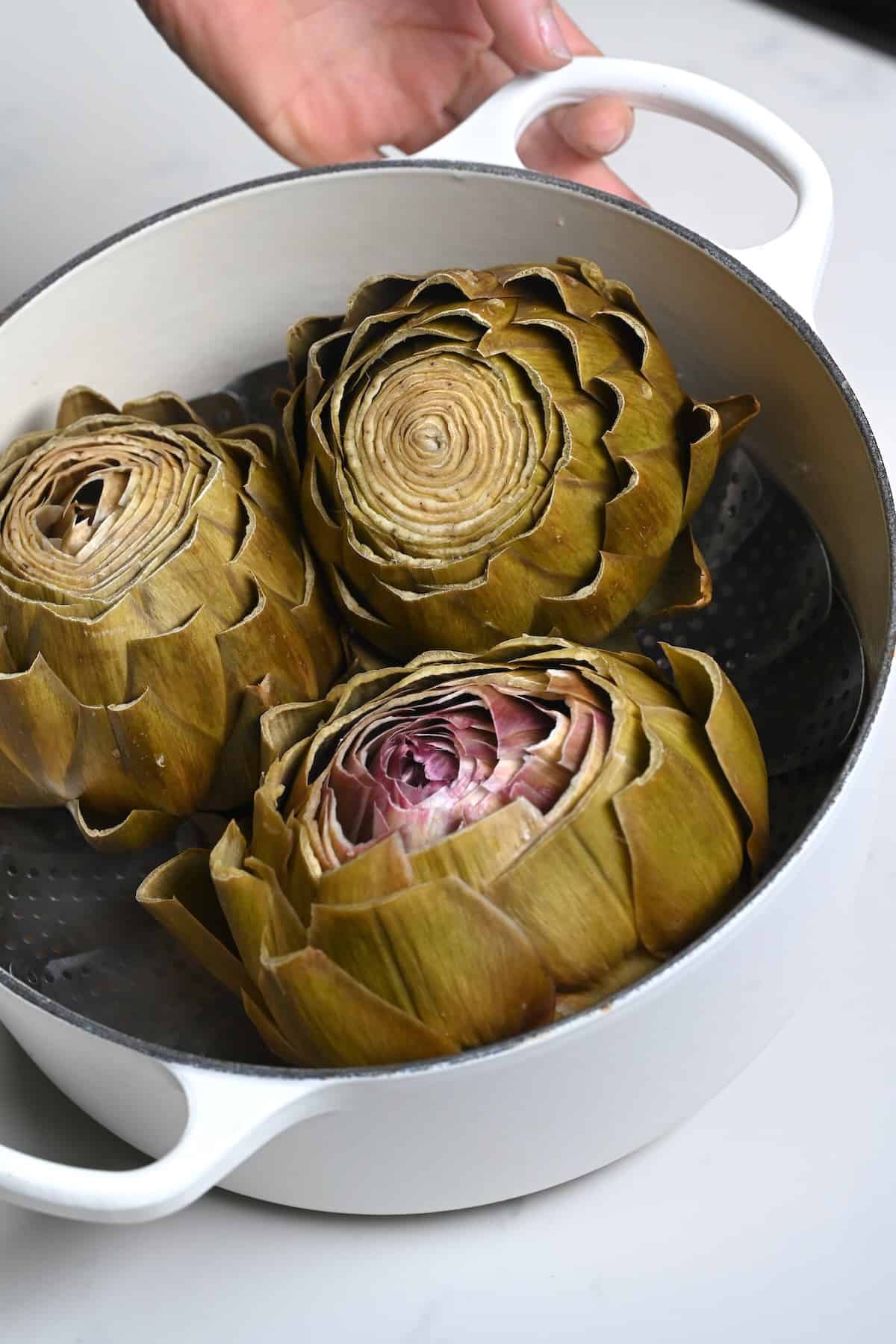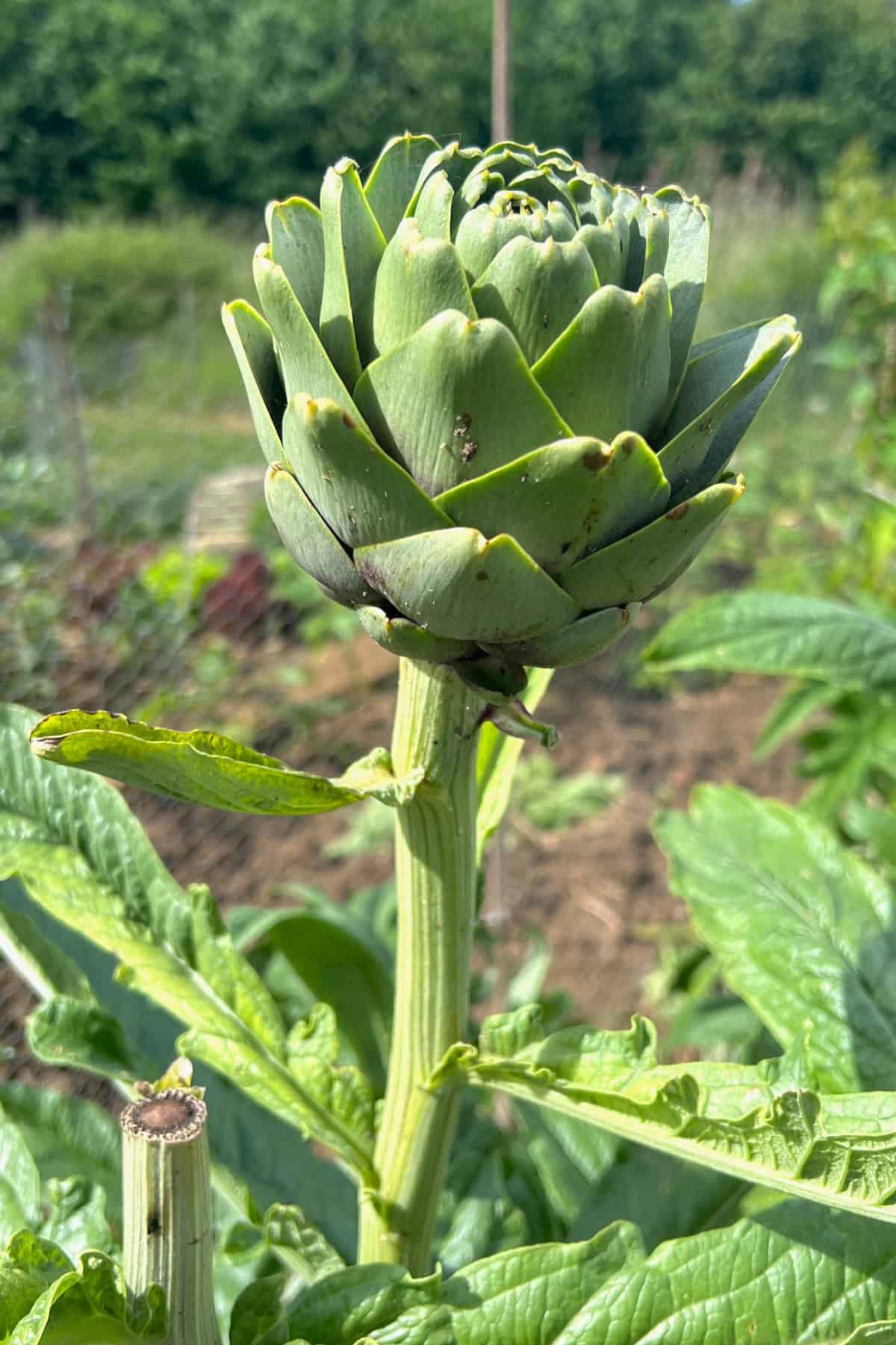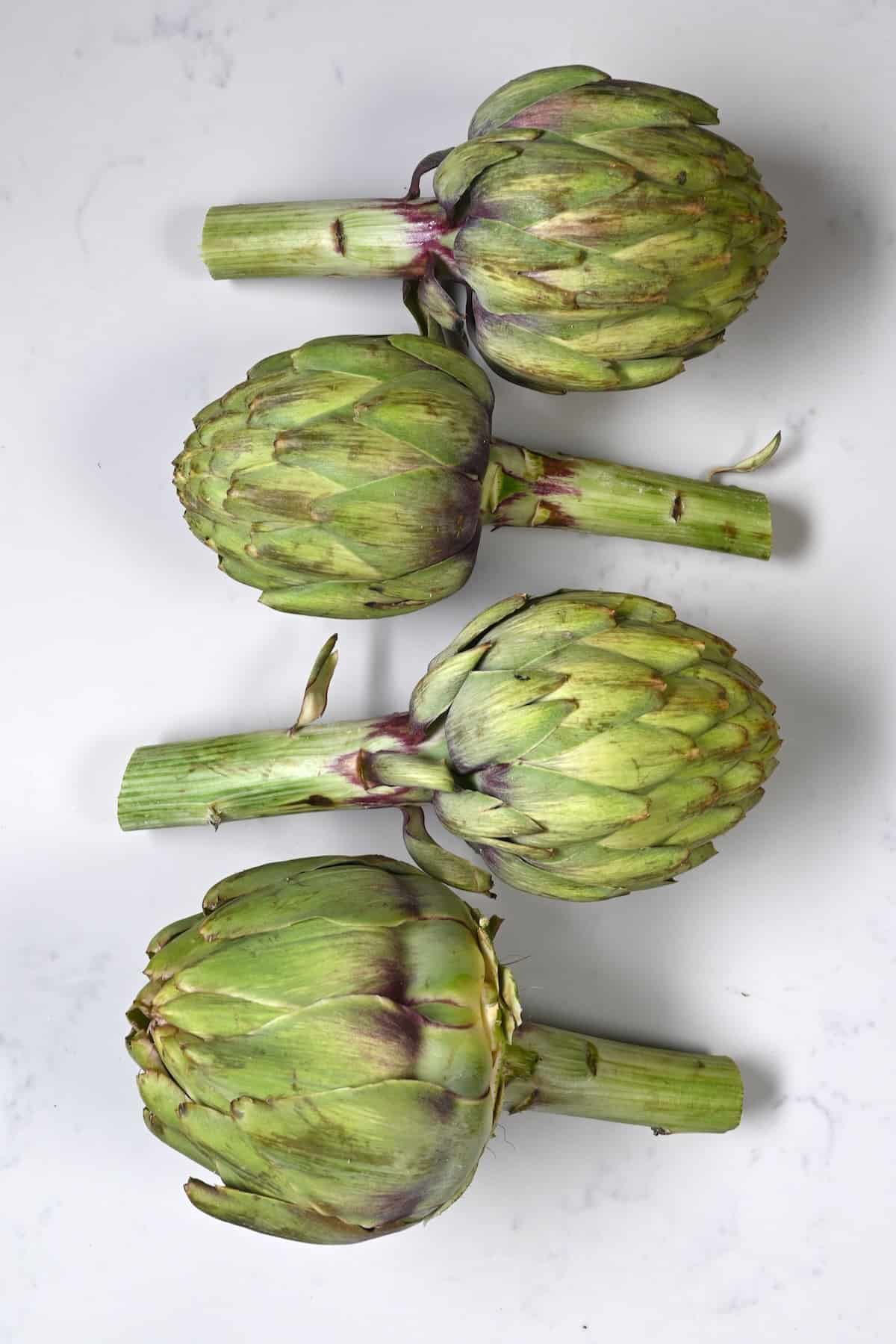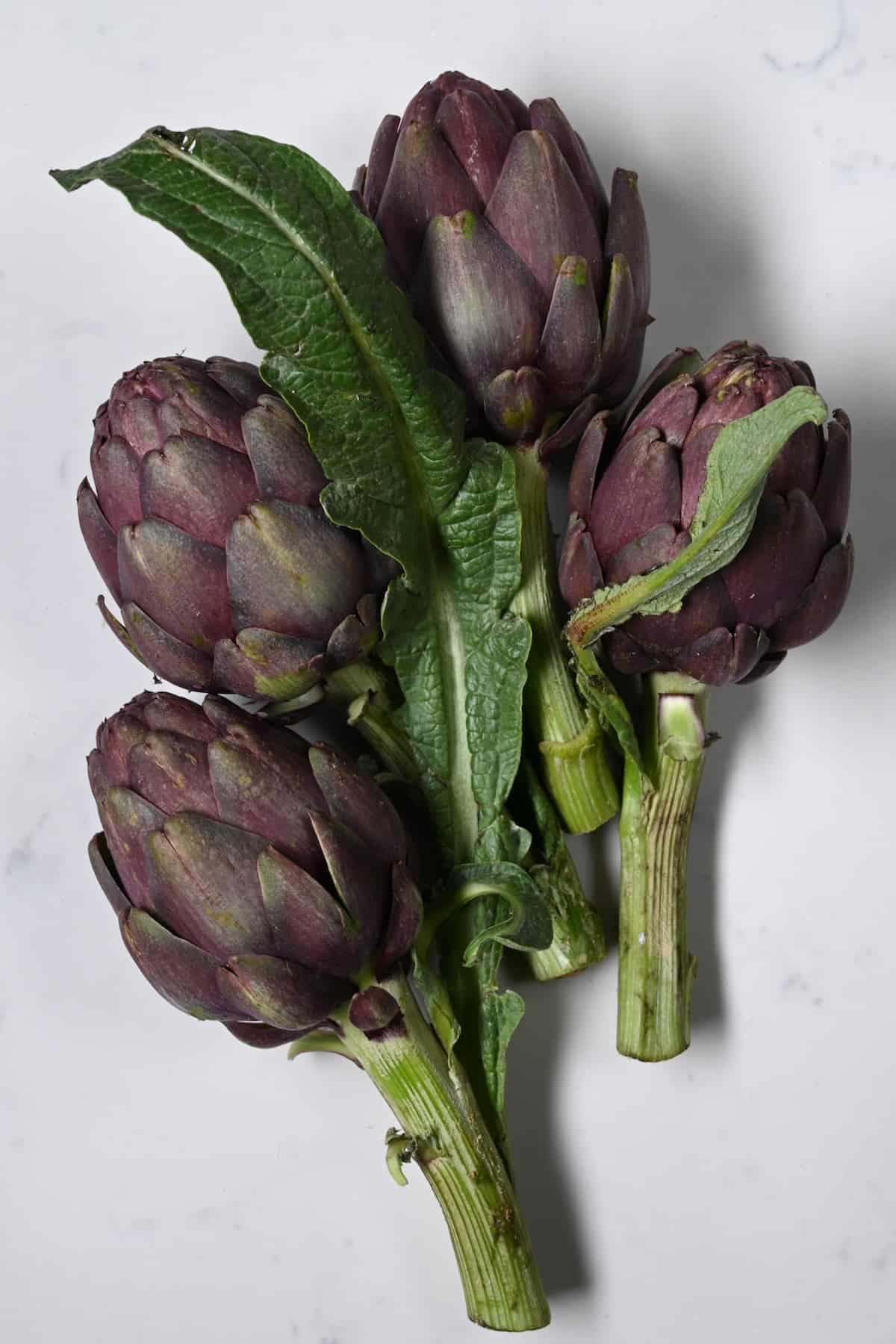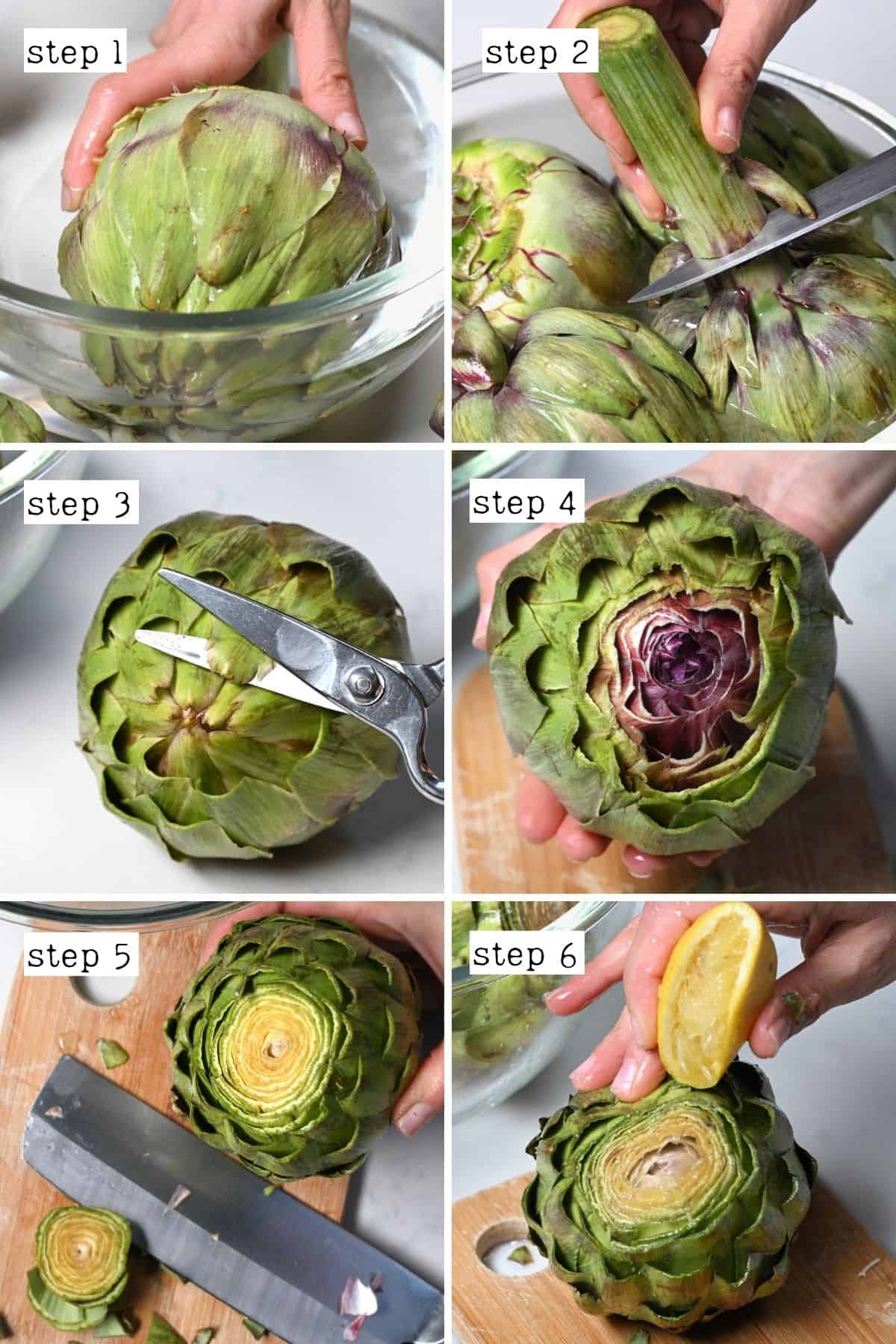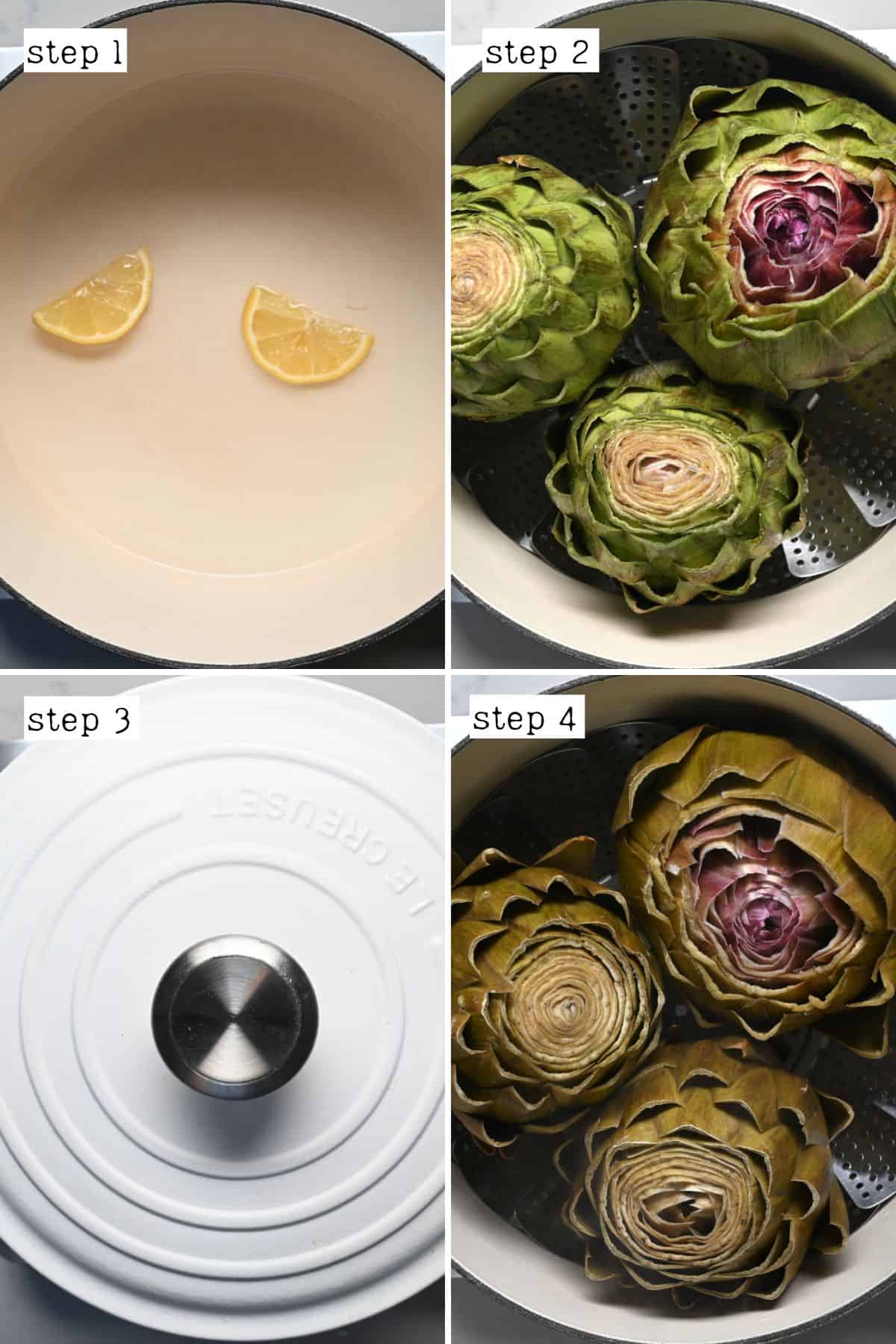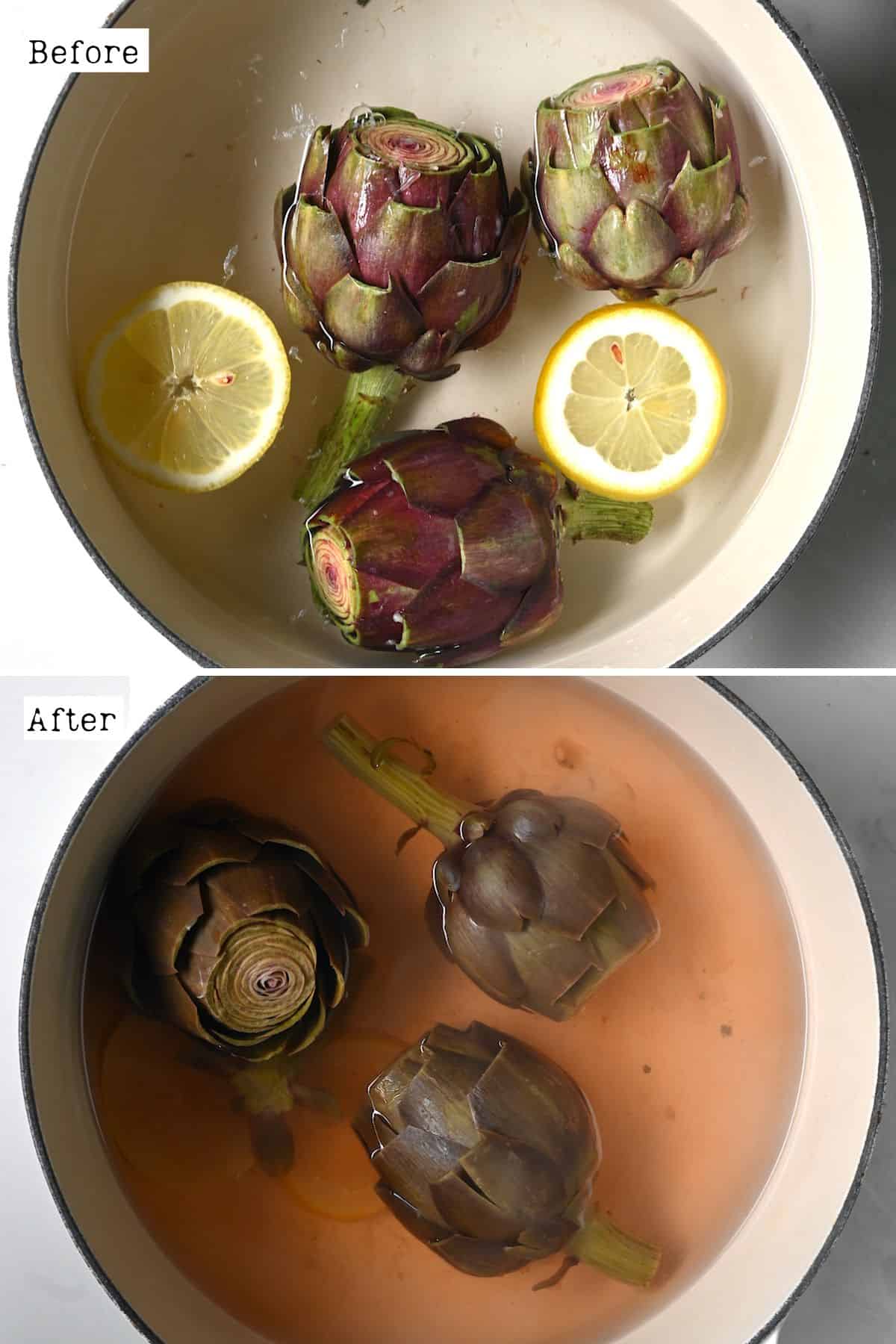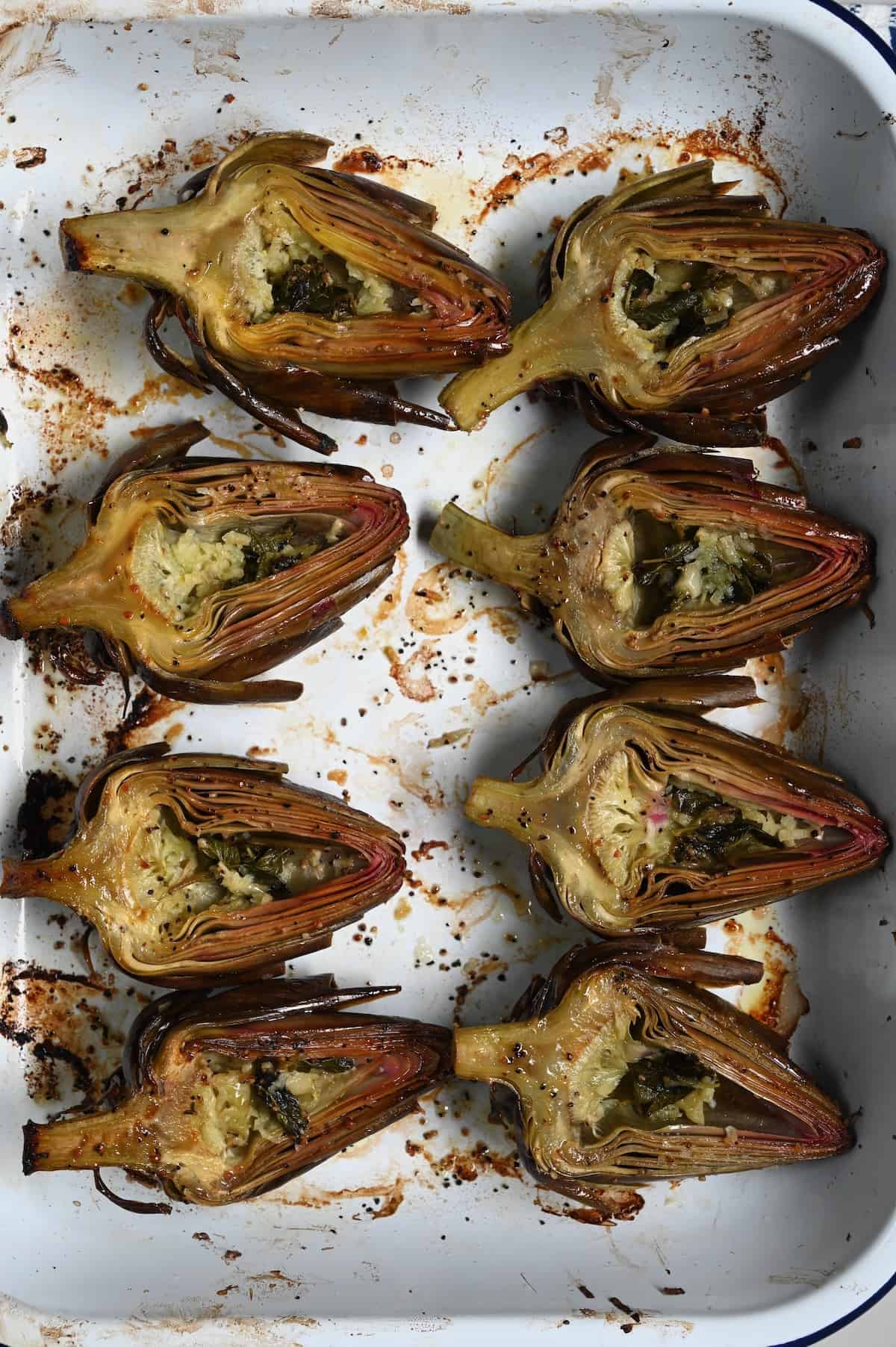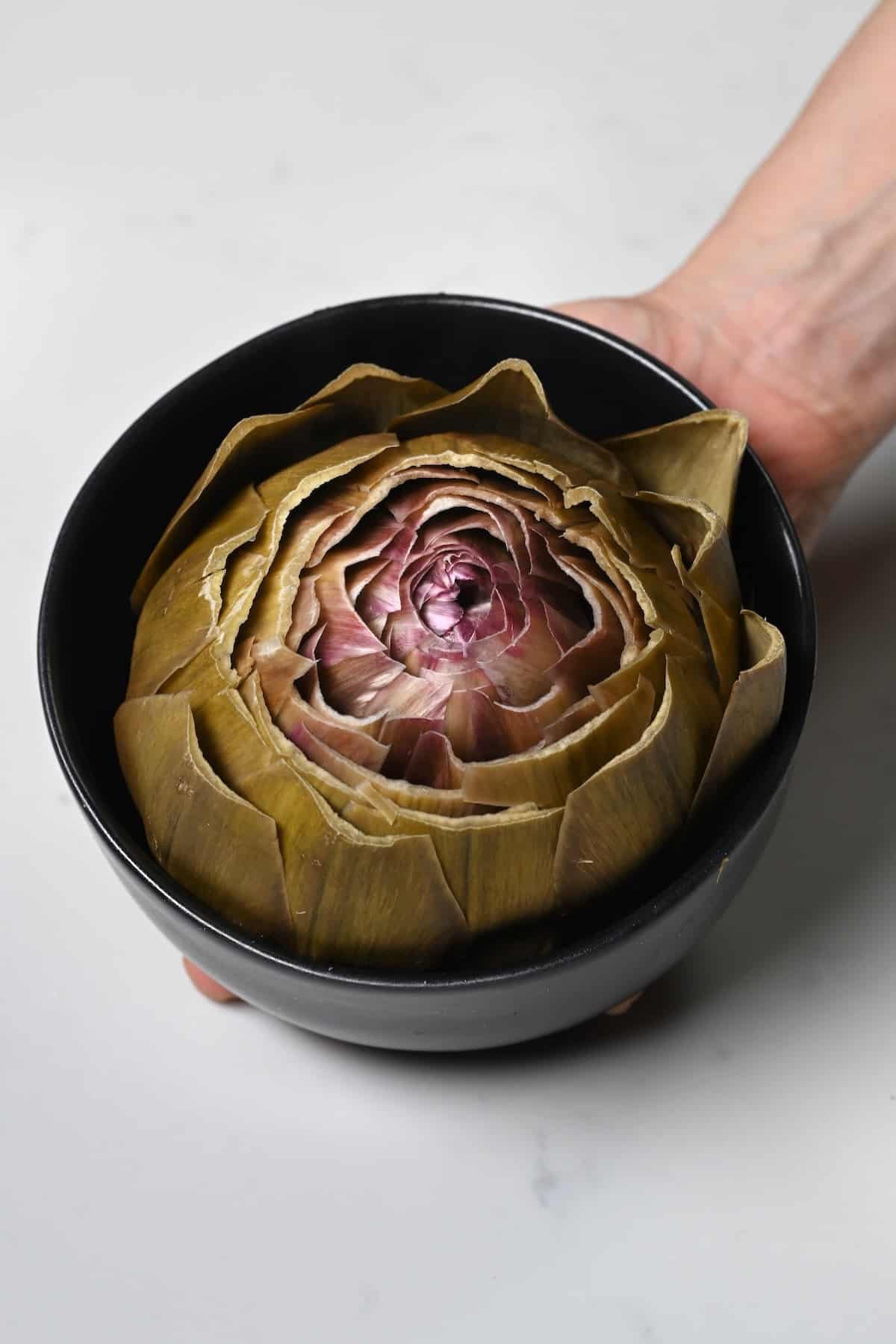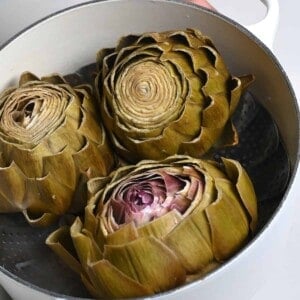Just like fennel (I recently demystified how to cook fennel), if you haven’t worked with artichokes before, these flower-like bulbs can be intimidating. However, they are beautiful and nutritious and surprisingly simple to prepare and cook in several ways. They will become melt-in-the-mouth tender & delicious – especially when served with the perfect artichoke dipping sauce! Keep reading for a simple step-by-step guide on how to prepare and how to cook artichokes. That includes how to steam artichokes, boil them, and microwave, roast, or air fry them. Once you learn how, cooking artichokes will become a new low-carb, keto, paleo favorite appetizer or side!
What is artichoke?
Artichoke (aka Cynara cardunculus) is also called globe artichoke, French artichoke, and Green artichoke. It comes from a flowering plant in the thistle family and is the flower bud before the flowers bloom. They have a peak season of March-May and September-October, though they’re often available year-round in US grocery stores. It contains a tough outer layer of fibrous leaves/petals (called “bracts”). The leaves cover a fuzzy/hairy center called a “choke” sitting over the soft, meaty core (artichoke heart). The outside of the leaves and the choke aren’t edible. But the flesh at the inner base of the leaves and the artichoke heart are delicious. Even the stem is edible. The flavor is creamy, satisfying, bitter-sweet, nutty, and slightly earthy!
Why are artichokes good for you?
They contain several beneficial plant compounds and enough antioxidants to be considered a superfood. Plus they have anti-inflammatory benefits. Artichokes are low fat, low calorie, contain moderate protein (about 4g per medium artichoke), & high fiber – perfect for heart & digestive health. Fresh artichokes also contain several vitamins and minerals, including folate, vitamin K, and vitamin C. They are also a good source of potassium, magnesium, phosphorous, iron, and several other micronutrients.
Studies show artichoke extract can also help maintain healthy cholesterol levels, and regulate blood pressure and blood sugar levels. Plus they can improve liver health and IBS symptoms.
How to pick artichokes from the store
The globe should be firm and heavy for its size, with compact leaves with no major separation between them. A few brown spots are fine, but the overall color should be vibrant. It’s not dry – when squeezed, it should squeak (like sneakers on a gym floor). The leaves shouldn’t be shriveled nor be able to pull away from the globe easily.
How to prepare and cook Artichokes
You can boil, roast, grill, saute, air fry, pressure cook, and steam artichokes. Keep reading for just a few of my favorite methods.
How to prepare artichokes
Cleaning artichokes: This isn’t always necessary when you prep them. But if needed, gently pull apart the leaves (to allow the water to flow between them) and rinse them well. The edible part on the leaves is at their base, so you won’t remove anything edible. If you aren’t cooking them immediately, transfer the artichokes to a bowl of cold water with the juice of one lemon, to slow oxidization.
Steamed Artichokes
A simple steamed artichoke recipe is one of the most popular forms of preparing artichokes. It is really simple to do using whole globes. I love adding 2 slices of lemon for aromatic flavor. You could also add bay leaves or garlic cloves. Monitor the water level to add more if needed. You can also steam artichokes in an Instant Pot.
Boiled Artichoke
Boiling artichokes requires no special tools and is easy to do with consistent results.
Microwave Artichoke
If you’re short on time, learn how to cook artichokes in 10 minutes with a microwave.
Roasted Artichokes
My roasted artichokes recipe uses halved artichokes and caramelizes, crisps, and enhances their flavor. Plus you can stuff them too. I’ve shared my full recipe for roasted artichokes here.
Air Fryer Artichokes
Air frying is best for smaller artichokes, yielding similar results to roasted in less time.
Storing cooked artichoke
Once cooked, store any leftovers in an airtight container in the fridge for 2-3 days. Pr keep in the freezer for up to 3 months.
More ingredient guides
How to cook Okra (6 Cooking Methods) How to cook Fennel How to cook Leeks How to cook Asparagus Homemade Zoodles How to cook Eggplant
If you try any of these methods for how to cook an artichoke, let me know how it goes in the comments below. I’d appreciate a recipe card rating and would love to see your recipe recreations – tag me on Instagram @Alphafoodie!



